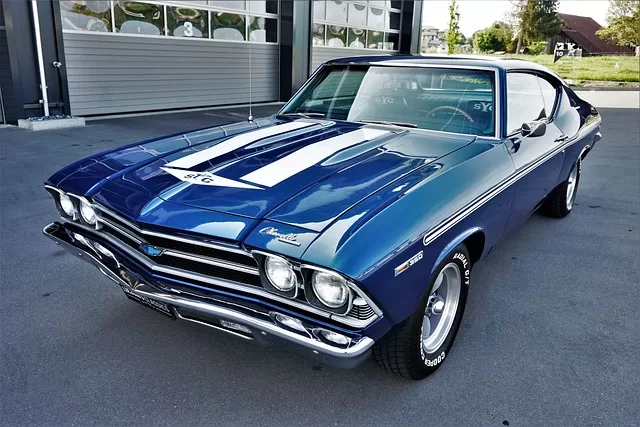Understanding Depreciation: How Car Condition Impacts Value Over Time
Car depreciation is the rate at which a vehicle loses its value over time. Right from the moment a new car leaves the dealership, its worth begins to decline.
Depreciation is a natural part of car ownership, but understanding how and why it happens can help you make smarter financial decisions and preserve more of your car’s value.
Why Depreciation Happens
Depreciation occurs for several reasons, as follows:
- Newer models with updated features make older cars less desirable.
- Wear and tear from regular use also contributes to reduced value.
- Market trends and fuel efficiency ratings can further affect a vehicle’s resale appeal.
How Fast Does a Car Typically Depreciate?
On average, a new car loses about 20 to 30 percent of its value within the first year. After five years, it may have lost over 60 percent. However, this rate varies depending on the vehicle type, brand reputation, and how well the car is maintained.
Key Factors That Influence Depreciation
Understanding what affects your car’s value can help you slow down depreciation and get a better return when it’s time to sell.
1. Age and Mileage
The older a car is and the more kilometres it has logged, the less it’s worth. Buyers typically prefer newer cars with lower mileage as they’re considered more reliable and less prone to expensive repairs.
2. Make and Model
Certain brands and models retain their value better than others. Vehicles known for durability, safety, and fuel efficiency often depreciate more slowly. Luxury models, on the other hand, may lose value more quickly due to higher initial prices and expensive parts.
3. Market Demand
If a car type is in high demand, such as compact SUVs or fuel-efficient hybrids, it may hold its value better. Conversely, cars with declining popularity or those discontinued by the manufacturer often depreciate faster.
4. Service and Maintenance History
A well-documented maintenance history can significantly slow depreciation. Regular servicing, oil changes, and prompt repairs show potential buyers that the vehicle has been well cared for.
5. Accident and Repair Records
Cars that have been involved in accidents, especially serious ones, tend to lose value more quickly. Even if repairs are done properly, buyers may hesitate to purchase a vehicle with a damaged history.
6. Modifications and Upgrades
Not all modifications add value. While some performance or safety upgrades might appeal to niche buyers, most aftermarket modifications can hurt resale value by making the car less universally appealing.
How Condition Directly Affects Car Value
Beyond the general factors, the physical and mechanical condition of your car plays a critical role in determining its resale price.
Exterior Condition: First Impressions Matter
Scratches, dents, faded paint, and rust are immediate red flags to buyers. A clean and polished exterior helps create a positive first impression and can justify a higher asking price.
Interior Wear and Tear: What Buyers Notice
Buyers pay close attention to the condition of the seats, dashboard, and carpeting. Stains, odours, and excessive wear can signal poor maintenance and make the car less attractive, even if it’s mechanically sound.
Mechanical Soundness: Engine, Brakes, and More
A car that runs smoothly, shifts gears cleanly, and stops reliably is far more valuable than one with strange noises or warning lights. Regular mechanical upkeep preserves both safety and value.
Tyres, Glass, and Lighting: Small Things Add Up
Worn-out tyres, chipped windshields, or broken lights may seem minor, but they can quickly add up in repair costs for the buyer. Addressing these issues before selling can boost the car’s perceived value.
Tips to Minimize Depreciation Over Time
You can’t avoid depreciation completely, but there are ways to reduce its impact.
Stay on Top of Maintenance
Routine servicing helps catch small problems before they become major issues. Keeping your car in peak condition ensures it stays reliable and retains more value.
Keep Records and Documentation
A full logbook with service receipts, repairs, and inspections gives buyers peace of mind. It shows that the car has been properly cared for, which can support a higher sale price.
Drive Responsibly and Store Properly
Avoid aggressive driving, which puts strain on the engine and brakes. Parking in a garage or using a car cover can also protect your vehicle from weather-related wear and tear.
When to Sell: Timing Matters
Choosing the right time to sell can make a noticeable difference in your final payout.
Best Time of Year to Sell
Spring and early summer are often ideal for selling used cars. Buyers are more active, and weather conditions make it easier to inspect and test drive vehicles.
When Condition Becomes a Liability
If your car is approaching a major service milestone or starting to show signs of wear, it might be better to sell sooner. Waiting too long can mean more depreciation and lower offers.
Getting a Fair Price for a Used Car
Understanding your car’s market value is essential to avoid being underpaid.
Online Valuation Tools and Professional Appraisals
Websites and services can offer ballpark estimates based on your vehicle’s age, condition, and location. For a more accurate assessment, consider a professional appraisal.
Private Sale vs. Car Buying Services
While private sales might fetch a slightly higher price, they can be time-consuming and stressful. If you’re looking for a faster option, you can sell your car quickly and with minimal hassle by using a trusted car buying service that offers fair, upfront pricing without the back-and-forth negotiations.
Conclusion: Protecting Your Car’s Value
Depreciation is an unavoidable part of car ownership, but understanding how condition affects value puts you in control.
By keeping your vehicle in good shape, documenting its service history, and choosing the right time to sell, you can get the best return possible when it’s time to part ways with your car.



